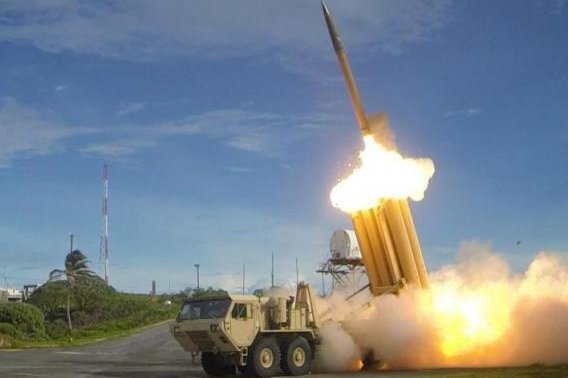
Speaking on the significance of the objectives of South Korea’s deployment of the Terminal High Altitude Area Defense system, or THAAD, prominent missile defense expert and Massachusetts Institute of Technology Professor Emeritus Theodore Postol previously hit the nail on the head by suggesting THAAD would be of no use in defending against North Korea’s No-Dong missile, but would still become a key component of U.S. national missile defense. Indeed, although at present it appears the verdict is in on THAAD’s introduction into South Korea, it doesn’t signify the final curtain but rather can be seen as an overture for the installation of more U.S. missile defense systems throughout Northeast Asia and the West Pacific.
THAAD’s deployment in South Korea will shake up the Asia-Pacific security environment and bring about new strategic instability. Some experts say THAAD’s X-band radar can extend as far as 2,000 km (about 1,243 miles) and that this constitutes a dire threat to the strategic weapon systems of China and Russia in the Far East. Such fears, however, are clearly overblown. Frankly speaking, if the United States relies solely on THAAD, it will not even come close to being able to disturb China and Russia’s strategic attack capabilities. What’s more troubling, and a cause for real alarm, is that the missile defense system’s advent into South Korea is only the tip of the iceberg for U.S. strategy. As time goes on, we will see the THAAD system already being stationed in South Korea and gaining additional siblings around Northeast Asia. On that point, Japanese Defense Minister Gen Nakatani has, intentionally or otherwise, given voice to the United States’ innermost desires, publicly stating that Japan has considerable interest in bringing THAAD into his country. Moreover, already there are reports indicating that the United States has concrete plans to take THAAD to the Philippines.
As the United States rolls out its third counterbalancing campaign of the 21st century, an extremely important pillar of that strategy will be the establishment of a missile defense system. Under this umbrella of national missile defense, the United States has already expanded its reach to Europe and erected one side of its missile defense wall. The events now progressing in the West Pacific can be seen as a reproduction of that process, with the United States’ ultimate aim being to develop its national missile defense into global missile defense. This is their grand stratagem.
After these missile defense systems are linked together into a network, the United States will be able to utilize its newly secured footing to dominate our planet as its sole hegemon. However, although they lack the capability and of course the intent, China and Russia might try to establish this type of global missile defense system, while the United States holds both the capacity and ambitions to do so. Therefore, policymakers, experts and the public should all take note that the problem is not simply THAAD, but rather that this type of technological, tactical and defensive weapon is being integrated into a strategic scheme with global implications.
So how should China respond? As one might imagine, as the United States raises missile defense barriers on China and Russia’s doorstep and encourages strategic instability, China and Russia will certainly adopt measures for some strategic rebalancing of their own. In fact, Russia is now doing this in Europe by developing weapons capable of penetrating missiles and nuclear armaments, and supersonic weapons capable of cutting through anti-missile countermeasures. Similarly, when China finds itself pressured by an adversary’s missile defense systems, it has two choices: strengthen its offensive capabilities or build its own missile defense shield. And as a result, THAAD’s introduction into South Korea will spur on a new round of strategic competition, with the United States on one side and China and Russia on the other, a competition that will involve a military arms race as much as strategic games and include increased troop deployments as much as the development of new technologies.
The technological revolution has proven that as game-changing technologies appear, a large segment of older technologies and products are phased out. Missile defense systems calculate a missile’s trajectory and then move to intercept, but drones, which do not fly along set trajectories, can avoid such countermeasures. I believe drone development will one day render missiles obsolete and that as a corollary, the value of missile defense systems will be greatly diminished. When a battle for supremacy is fought mostly on familiar and well-trodden terrain, any game-changing technological breakthroughs become key turning points. Therefore, time is not on the side of missile defense, but rather favors the technological revolution, and in particular, its military facets. China can either selectively strengthen its missile technologies to curb U.S. missile defense systems, or it can proceed along other lines, such as with drones and supersonic weapons. And the bottom line? The various options available to China will put those states building missile defense systems in a very disadvantageous position indeed.
The author is a research fellow at the China Institute of International Studies.

Leave a Reply
You must be logged in to post a comment.